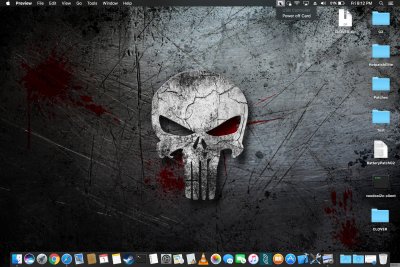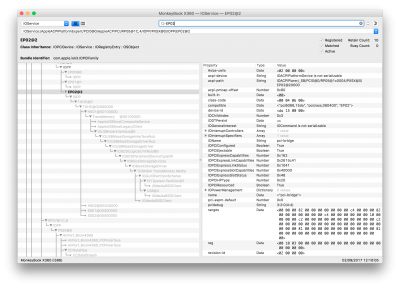/*
* Intel ACPI Component Architecture
* AML/ASL+ Disassembler version 20161117-64(RM)
* Copyright (c) 2000 - 2016 Intel Corporation
*
* Disassembling to non-symbolic legacy ASL operators
*
* Disassembly of iASL9oGNWl.aml, Sat Sep 2 12:12:34 2017
*
* Original Table Header:
* Signature "SSDT"
* Length 0x000002B3 (691)
* Revision 0x02
* Checksum 0x36
* OEM ID "hack"
* OEM Table ID "TYPC"
* OEM Revision 0x00000000 (0)
* Compiler ID "INTL"
* Compiler Version 0x20161117 (538317079)
*/
DefinitionBlock ("", "SSDT", 2, "hack", "TYPC", 0x00000000)
{
External (_SB_.PCI0.RP05.PXSX, DeviceObj) // (from opcode)
Scope (_SB.PCI0.RP05.PXSX)
{
Device (EP00)
{
Name (_ADR, Zero) // _ADR: Address
}
Device (EP01)
{
Name (_ADR, 0x00010000) // _ADR: Address
}
Device (EP02)
{
Name (_ADR, 0x00020000) // _ADR: Address
}
}
Scope (_SB.PCI0.RP05.PXSX.EP02)
{
Device (TXHC)
{
Name (_ADR, Zero) // _ADR: Address
Name (_PRW, Package (0x02) // _PRW: Power Resources for Wake
{
0x6D,
Zero
})
Device (RHUB)
{
Name (_ADR, Zero) // _ADR: Address
Device (HS01)
{
Name (_ADR, One) // _ADR: Address
Method (_UPC, 0, Serialized) // _UPC: USB Port Capabilities
{
Return (GUPC (One))
}
Method (_PLD, 0, Serialized) // _PLD: Physical Location of Device
{
Return (TPLD (One, 0x14))
}
}
Device (HS02)
{
Name (_ADR, 0x02) // _ADR: Address
Method (_UPC, 0, Serialized) // _UPC: USB Port Capabilities
{
Return (GUPC (One))
}
Method (_PLD, 0, Serialized) // _PLD: Physical Location of Device
{
Return (TPLD (Zero, 0x15))
}
}
Device (SS01)
{
Name (_ADR, 0x03) // _ADR: Address
Method (_UPC, 0, Serialized) // _UPC: USB Port Capabilities
{
Return (GUPC (One))
}
Method (_PLD, 0, Serialized) // _PLD: Physical Location of Device
{
Return (TPLD (One, 0x14))
}
}
Device (SS02)
{
Name (_ADR, 0x04) // _ADR: Address
Method (_UPC, 0, Serialized) // _UPC: USB Port Capabilities
{
Return (GUPC (One))
}
Method (_PLD, 0, Serialized) // _PLD: Physical Location of Device
{
Return (TPLD (Zero, 0x15))
}
}
Method (GPLD, 2, Serialized)
{
Name (PCKG, Package (0x01)
{
Buffer (0x10) {}
})
CreateField (DerefOf (Index (PCKG, Zero)), Zero, 0x07, REV)
Store (One, REV)
CreateField (DerefOf (Index (PCKG, Zero)), 0x40, One, VISI)
Store (Arg0, VISI)
CreateField (DerefOf (Index (PCKG, Zero)), 0x57, 0x08, GPOS)
Store (Arg1, GPOS)
Return (PCKG)
}
Method (TPLD, 2, Serialized)
{
Name (PCKG, Package (0x01)
{
Buffer (0x10) {}
})
CreateField (DerefOf (Index (PCKG, Zero)), Zero, 0x07, REV)
Store (One, REV)
CreateField (DerefOf (Index (PCKG, Zero)), 0x40, One, VISI)
Store (Arg0, VISI)
CreateField (DerefOf (Index (PCKG, Zero)), 0x57, 0x08, GPOS)
Store (Arg1, GPOS)
CreateField (DerefOf (Index (PCKG, Zero)), 0x4A, 0x04, SHAP)
Store (One, SHAP)
CreateField (DerefOf (Index (PCKG, Zero)), 0x20, 0x10, WID)
Store (0x08, WID)
CreateField (DerefOf (Index (PCKG, Zero)), 0x30, 0x10, HGT)
Store (0x03, HGT)
Return (PCKG)
}
Method (GUPC, 1, Serialized)
{
Name (PCKG, Package (0x04)
{
Zero,
0xFF,
Zero,
Zero
})
Store (Arg0, Index (PCKG, Zero))
Return (PCKG)
}
Method (TUPC, 1, Serialized)
{
Name (PCKG, Package (0x04)
{
One,
Zero,
Zero,
Zero
})
Store (Arg0, Index (PCKG, One))
Return (PCKG)
}
}
}
}
}


